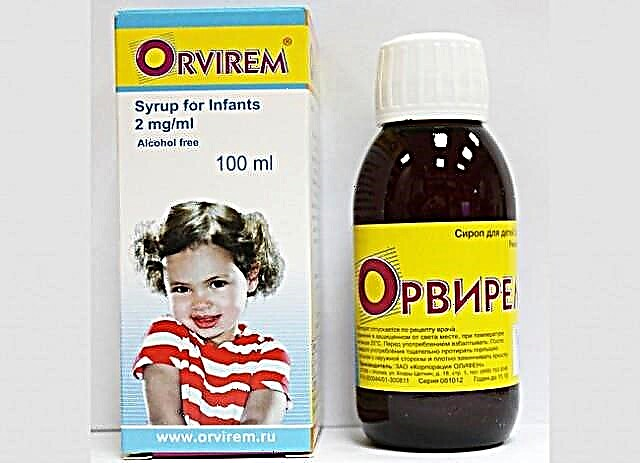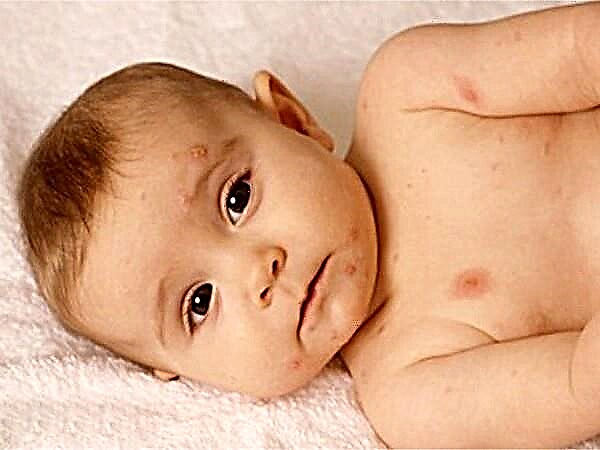Blue skin around the nose and mouth in infants is a common phenomenon, often provoked by external or physiological factors. Sometimes a similar symptom may indicate certain pathologies that a newborn has. In the latter case, a mandatory medical examination is required. When exactly is the blue nasolabial triangle in a child the norm, and when does it indicate health problems? Why is this happening, and what does it mean? What should parents do in such situations?

Blue skin over the upper lip is common in infancy
Features of the blood supply to the nasolabial triangle
The area on the face, located within the nasolabial folds and bounded above and below by the nose and lips, respectively, is called the nasolabial triangle. This area is characterized by the fact that the blood supply is especially developed in it - large vessels are located here, through which venous and arterial blood passes.
The baby's skin in this area is very thin and delicate. That is why the veins literally shine through it, as a result of which the dermis sometimes looks bluish.
External factors
The most common external factor that can cause blue skin in a baby is low air temperature. Under its influence, some parts of the child's body can turn blue (the area around the nose and lips is no exception). This is explained by the imperfection of the thermoregulation of the child's body in the first months of life. As the child warms up, the cyanosis of this area will gradually disappear.
On a note. Often, a frightening symptom occurs while walking with a baby. If the mother noticed that the skin on the baby's face has acquired a bluish tint, then it's time to return home.
Another external reason that can lead to cyanosis of the nasolabial triangle in a child is a long stay at a height or in other similar conditions. Obviously, such a situation is unlikely for a newborn, however, this factor should not be ruled out. Change in skin color in this case does not pose a serious danger to life, since it is a protective reaction of the body to the negative effects of the environment.
Other reasons include various external stimuli that can cause prolonged screaming and crying in the infant (for example, severe fright, lack of parental attention, hunger, etc.). At this moment, a sharp lack of oxygen is felt in the body of the newborn, the vessels expand due to physical stress and become clearly visible (pulmonary cyanosis occurs). Such a condition does not pose any threat to the health of a month-old baby and goes away on its own as soon as the baby calms down.

One of the most common external factors is hypothermia.
How to avoid
In order to prevent the occurrence of an unpleasant symptom due to the influence of external factors, one should try to avoid such situations, namely:
- Do not expose the baby to the influence of low temperatures (do not stay outside for a long time in cold weather, it is warmer to dress the baby);
- Do not allow the child to stay for a long time in places where the air is very rarefied (there is little oxygen);
- Make sure that the baby is not exposed to stressful conditions that can lead to prolonged screaming and tears (fear, severe hunger, lack of attention, uncomfortable sleeping conditions, etc.).
Prevention
Prevention of cyanosis in a child must be carried out even during pregnancy. During this period, mom should:
- Beware of infectious diseases;
- Quit smoking and alcohol consumption;
- Try not to expose yourself to stress and anxiety;
- Spend more time outdoors;
- Eat right (food should be saturated with vitamins and other nutrients);
- Observe all medical recommendations, regularly undergo a medical examination.
On a note. Congenital heart disease is one of the most common pathological causes of the blue triangle around the mouth in a child.
With the birth of a child, a complex of preventive measures involves the following actions:
- Undergo regular medical examinations.
- Provide timely treatment (if necessary).
- Observe daily and nutritional regimes.
- Provide the baby with comfortable conditions (normal air temperature, comfortable clothes, high-quality and sufficient food, healthy sleep, etc.).
- Try to walk with your child more often, visit squares and parks.
- Avoid hypothermia of the child's body, prevent respiratory diseases.
- Monitor the state of the water while bathing the baby (it should not be cold or too cool). Also, sharp changes in air temperature should not be allowed (for example, the bathroom may turn out to be much warmer than in the children's room). It is better not to abuse hardening.
Important! If we are talking about serious diseases, which are also characterized by cyanosis (in particular, with neurological disorders, asthma, pathologies of the cardiovascular system, etc.), preventive measures will be useless. In such cases, adequate and timely treatment is required.

While swimming, you need to monitor the temperature of the water, otherwise the crumb will freeze
Physiological causes of blue nasolabial triangle
The physiological reasons are quite diverse. In the first months of life, the baby often cries a lot, screams, as a result of which he may develop pulmonary cyanosis (which was mentioned above). This condition is considered the norm for a baby and goes away on its own when the baby stops crying.
Cyanosis most often occurs in babies who were exposed to hypoxia or asphyxia at birth (this is possible if the umbilical cord is wrapped around the baby's neck) or were born prematurely. In such babies, the circulatory system is imperfect, therefore it needs to be restored. It will take several months to normalize all processes. After this time, the cyanosis problem will disappear by itself.
Cyanosis of the nasolabial triangle often occurs when the baby is breastfeeding. This is not surprising, since the process of drawing milk is a great burden for the baby. The baby tenses, as a result of which the blood vessels swell and begin to shine through the thin skin. After feeding, the cyanosis goes away on its own.
Other factors that can cause blue skin in an infant include:
- Hyperactivity of babies, frequent whims. An excess of emotions leads to changes in the state of the cardiovascular and respiratory systems, which, in turn, can cause cyanosis;
- Too light and thin skin itself causes a cyanosis effect above the upper lip. The color becomes frighteningly bright due to protruding capillaries. In this case, you should not be afraid - over time, the blue discoloration will pass.
- Hypothermia of the baby. This can happen during swimming, due to being outside for too long (especially in cold weather) and even at home (if the baby is not dressed warmly enough, or the air temperature in the children's room is low).
Pathological causes
As an independent symptom, cyanosis is quite rare. Somewhat more often, this ailment is a sign of acute or chronic diseases, various deviations.
By itself, a dark skin color occurs against the background of an increased concentration of carbon dioxide in the blood. This condition can be caused by pathologies associated with impaired pulmonary gas exchange or heart disease.
Important! It is necessary to distinguish between a sharp and gradual darkening of the skin. The first can provoke asphyxia or blockage of the pulmonary artery by a detached thrombus. If cyanosis develops gradually (within an hour or even a day), then there is a possibility of pneumonia, chronic pathologies of the heart and lungs, bronchial asthma. Obviously, the first category of diseases requires more urgent medical intervention, so you need to carefully monitor the baby's condition.

Blue over the upper lip in some cases is a sign of pathology
So, among the dangerous causes of blue skin include:
- Heart disease;
- Acute heart failure;
- Asphyxia;
- Blockage of the pulmonary artery;
- Asthma;
- Pneumonia;
- Chronic diseases of the lungs and organs of the cardiovascular system;
- Problems with the development of the respiratory system;
- The presence of foreign objects in the respiratory system.
Important! All of these cases require urgent medical examination.
Heart defects, as well as acute heart failure, lead to the fact that organs and tissues are not saturated with blood in sufficient volume. As a result, the cells of the body are exposed to oxygen starvation, heart rhythm failure occurs, which can lead to irreversible consequences.
As for the defects of the respiratory system, among them are bronchial hypoplasia (that is, their insufficient development), tracheal stenosis, in which the passage of air into the lungs is impeded, and so on.
Important! If the above problems occur, urgent medical attention is needed.
Not so dangerous reasons (which are still pathological in nature) include:
- Colds;
- Small anomalies in the development of the heart, for example, an open oval window (OOO). This deviation is detected in many children almost immediately after birth. It is not a heart defect, however, if the doctor observes interruptions in the work of the heart or notes a serious defect, surgery is prescribed.
The famous pediatrician, Yevgeny Komarovsky, explains the blue discoloration of the nasolabial triangle by two of the most possible reasons:
- A feature of the blood vessels of all newborns;
- Violation of the heart.
The doctor recommends that parents remain calm, noting that heart problems are characterized by a number of symptoms, only one of which is the cyanosis of the nasolabial triangle. The pediatrician advises parents not to panic and check the health of the baby using an ultrasound of the heart.
Dangerous symptoms accompanying cyanosis
To understand that blue skin is caused by a serious pathology, you need to pay attention to the accompanying symptoms:
- If cyanosis has arisen against the background of serious respiratory diseases (for example, pneumonia), then in this case the crumbs have shortness of breath, pallor of the skin, shortness of breath, wheezing. Such symptoms are common not only for pneumonia, but can also indicate a prolonged cold or viral infection.
In addition to these symptoms, pneumonia is accompanied by:
- Loss of appetite;
- Headache;
- Nausea and vomiting;
- Foamy discharge from the mouth;
- Lowered blood pressure.
- If a foreign body gets into the respiratory tract, a sharp blue discoloration of the skin around the nose and lips occurs, the child's breathing becomes difficult, the little one coughs and greedily gasps for air. The baby may choke on food or accidentally inhale a small fragment of the toy. In this case, the child needs first aid:
- Turn the baby over face down and with little effort knock on the back (it is better to perform such actions over an armchair or sofa so that the baby does not accidentally fall to the floor);
- Sit in a chair, put the child on the left knee, face down. At the same time, the mother's left palm should be located on the baby's chest and hold his neck. At the same time, the right hand makes strong jerks with the edge of the palm along the back (between the shoulder blades) in an upward direction. At the same moment, it is necessary to provoke vomiting in a newborn by pressing on the root of the tongue. These manipulations are performed before the arrival of an ambulance.
- Constant cyanosis may indicate a congenital heart disease. At the same time, blue discoloration is also observed on the fingers and toes, auricles. The pathology is accompanied by symptoms such as tachycardia, increased sweating, pallor of the skin, increased fatigue, shortness of breath, insufficient weight gain. To establish an accurate diagnosis, the baby's heart is examined using an ECG, ultrasound, and X-ray. The child is examined by a pulmonologist, cardiologist and neurologist.
- If, before the appearance of blue, the baby began to behave restlessly, his legs, arms or chin trembled, then we can talk about interruptions in the work of the heart due to congenital defect or acute heart failure. There is also a possibility of disruption in the work of the central nervous system.

If there is a suspicion of a serious illness, it is urgent to show the baby to the doctor
Before panicking, you need to analyze your overall health:
- Are there any deviations in the development of the baby, is he growing normally.
- How does his breathing take place, is it difficult at the moments when the triangle turns blue?
- Whether there are previously detected heart murmurs.
- Whether cyanosis occurs in other areas of the body.
- What is the activity of a baby up to one year old, does he get tired too quickly, does he feel constant drowsiness.
- Does the child have pale skin?
Important! The stronger and more dangerous the painful condition, the more blue the skin of the nasolabial triangle in the baby becomes. Therefore, in the event of the above symptoms, you should immediately consult a doctor.
A blue nasolabial triangle in a baby is one of the external signs that can become a reason for parents to worry about the health of their baby. Mom and Dad need to know under what circumstances it is necessary to show the baby to the doctor, and in which it is enough to observe the child at home.



